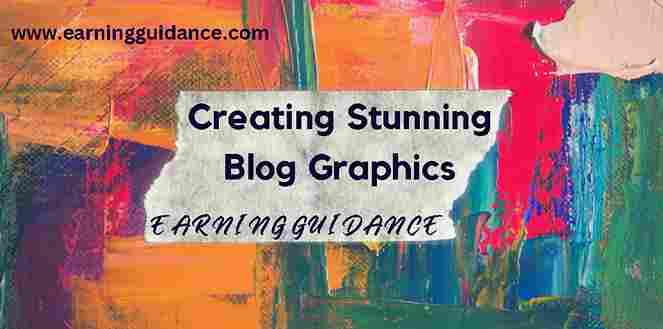Table Of Contents
- 1 Introduction
- 2 Understanding the Audience
- 3 Crafting Captivating Headlines
- 4 Storytelling and Narrative Techniques
- 5 Structuring Engaging Blog Posts
- 6 Writing Compelling Introductions
- 7 Creating Engaging Content
- 8 Incorporating Call-to-Actions
- 9 Optimizing for Search Engines
- 10 Promoting and Sharing Your Blog Posts
- 11 FAQs
- 11.1 How long should a blog post be to engage readers?
- 11.2 What are some effective techniques for overcoming writer’s block?
- 11.3 How often should I publish new blog posts to keep readers engaged?
- 11.4 Can I repurpose existing content to make it more engaging?
- 11.5 How can I measure the engagement of my blog posts?
- 12 Conclusion
Introduction
Writing engaging blog posts is crucial for capturing and retaining the attention of your readers. The success of your blog relies heavily on the quality and engagement level of your content. In this article, we will explore various strategies and techniques to help you mastering the art of writing engaging blog posts that leave a lasting impact on your audience.
Understanding the Audience
In order to create engaging blog posts, it is crucial to have a deep understanding of your target audience. By knowing their needs, preferences, and interests, you can tailor your content to effectively capture their attention and keep them engaged. In this section, we will explore the importance of understanding your audience and provide practical strategies for conducting audience research.
How to Choose the Perfect Blogging Platform for Your Needs
Why Understanding Your Audience Matters
Understanding your audience is the foundation of successful content creation. Here’s why it matters:
- Relevance: By knowing your audience, you can create content that is relevant to their interests and needs, making it more likely to resonate with them.
- Engagement: Tailoring your content to your audience’s preferences increases the chances of capturing and maintaining their attention, resulting in higher engagement levels.
- Connection: When you understand your audience, you can establish a genuine connection by addressing their pain points, providing solutions, and offering valuable insights.
Search Engine Journal’s article explores various techniques to engage readers with blog posts, providing actionable advice and real-life examples.
Defining Your Target Audience
To understand your audience, you must first define your target audience. Consider the following steps:
- Demographics: Identify key demographic information such as age, gender, location, education level, and occupation.
- Interests and Preferences: Determine the topics, hobbies, and areas of interest that your audience is passionate about.
- Needs and Challenges: Understand the specific needs, challenges, and pain points your audience faces, and how your content can address them.
Conducting Audience Research
Once you have defined your target audience, it’s time to conduct thorough audience research. Here are some effective strategies to gather insights:
- Surveys and Questionnaires: Create surveys or questionnaires to collect data directly from your audience. Ask about their preferences, opinions, and the type of content they find most engaging.
- Social Media Listening: Monitor conversations on social media platforms to understand the topics, trends, and discussions relevant to your audience.
- Website Analytics: Analyze your website analytics to gain insights into your audience’s behavior, such as the pages they visit, the time spent on each page, and the content they engage with the most.
- Competitor Analysis: Study your competitors’ audience to identify overlapping interests and discover potential gaps you can fill.
Creating Buyer Personas
Creating buyer personas is an effective way to synthesize your audience research and develop a clear understanding of your ideal readers. Here’s how to create buyer personas:
- Identify Common Traits: Based on your audience research, identify common traits, behaviors, and characteristics that define your target audience segments.
- Persona Profiles: Create detailed persona profiles that represent each segment. Include demographic information, interests, goals, challenges, and preferred content formats.
- Empathy Mapping: Use empathy mapping to delve deeper into the emotions, motivations, and aspirations of your personas. This helps you align your content with their needs and desires.
- Persona Validation: Validate your buyer personas by gathering feedback from your audience through interviews or focus groups. This ensures that your personas accurately represent your target audience.
By creating well-defined buyer personas, you can keep your audience top of mind while creating engaging blog posts. These personas serve as guiding references throughout the content creation process.
Utilizing Audience Insights for Content Creation
Once you have a solid understanding of your audience, you can use those insights to create highly engaging blog posts. Consider the following strategies:
- Content Relevance: Align your content with your audience’s interests, needs, and preferences. Create content that provides solutions, answers their questions, or sparks their curiosity.
- Tone and Language: Adapt your writing style, tone, and language to resonate with your audience. Use their vocabulary, speak directly to their pain points, and establish a conversational tone.
- Content Format: Understand your audience’s preferred content formats. Some may prefer long-form articles, while others may prefer videos or infographics. Provide content in formats that appeal to your audience.
- Addressing Objections: Identify common objections or challenges your audience may have and address them in your content. This builds trust and credibility, demonstrating that you understand their concerns.
- Personalization: Tailor your content to different segments of your audience. Consider creating subtopics or variations of your content that cater to specific interests or needs.
By utilizing audience insights in your content creation process, you can create blog posts that are highly relevant, valuable, and engaging to your target audience.
Neil Patel’s blog post offers practical tips and strategies for writing engaging blog posts, focusing on improving reader engagement and creating valuable content.
Crafting Captivating Headlines
The headline of your blog post is the first thing that catches the reader’s attention. A captivating headline can entice them to click and read your blog post, while a lackluster headline can cause them to scroll past. In this section, we will explore the importance of crafting captivating headlines and provide you with techniques to create click-worthy titles that grab your readers’ attention.
The Power of Headlines
Headlines play a crucial role in capturing readers’ attention and enticing them to engage with your content. Here’s why headlines are so important:
- First Impression: Headlines are the first impression readers have of your blog post. They determine whether readers will click and continue reading or move on to something else.
- Curiosity and Intrigue: Well-crafted headlines spark curiosity and intrigue, compelling readers to find out more and delve into your content.
- SEO Benefits: Headlines also contribute to search engine optimization (SEO) by incorporating relevant keywords and improving the visibility of your blog post in search results.
Techniques for Creating Compelling Headlines
Crafting captivating headlines requires a combination of creativity, relevance, and an understanding of what resonates with your target audience. Here are some techniques to help you create click-worthy titles:
- Use Numbers: Incorporate numbers into your headlines to provide a clear and specific value proposition. For example, “10 Tips for Writing Engaging Blog Posts.”
- Pose a Question: Ask a thought-provoking question that resonates with your audience’s pain points or desires. For instance, “Struggling to Write Engaging Blog Posts? Here’s What You Need to Know.”
- Highlight Benefits: Clearly communicate the benefits or solutions your blog post offers. For example, “Unlock the Secrets to Writing Engaging Blog Posts and Skyrocket Your Reader Engagement.”
- Create a Sense of Urgency: Use words that create a sense of urgency or exclusivity, encouraging readers to take immediate action. For instance, “Limited Time Offer: Master the Art of Writing Engaging Blog Posts Today!”
- Leverage Power Words: Incorporate powerful and emotionally charged words that grab attention and evoke curiosity. Examples include “ultimate,” “essential,” “proven,” “insider secrets,” etc.
- Add Adjectives: Use descriptive adjectives to make your headlines more compelling and engaging. For example, “Incredibly Engaging Blog Posts That Will Leave Your Readers Wanting More.”
- Make Bold Statements: Make bold and intriguing statements that challenge common beliefs or pique curiosity. For instance, “The Art of Writing Engaging Blog Posts: Unveiling the Hidden Techniques.”
- Utilize Buzzwords: Stay up to date with trending topics and incorporate relevant buzzwords to catch readers’ attention. However, ensure the buzzwords are relevant and meaningful to your content.
Remember to keep your headlines concise, clear, and aligned with the content of your blog post. Avoid clickbait tactics that mislead readers, as this can harm your credibility.
Examples of Captivating Headlines
To give you an idea of what captivating headlines look like, here are some examples:
- “Unlock the Secrets of Writing Engaging Blog Posts and Captivate Your Audience”
- “How to Write Blog Posts That Keep Readers Glued to the Screen”
- “10 Foolproof Techniques for Crafting Compelling Blog Post Headlines”
- “The Ultimate Guide to Creating Click-Worthy Blog Post Titles”
- “Master the Art of Writing Engaging Blog Posts: Insider Tips Revealed”
By applying these headline techniques and drawing inspiration from successful examples, you can create compelling titles that grab your readers’ attention and entice them to explore your blog posts further.
Remember to keep experimenting and testing different headline approaches to see what resonates best with your audience.
Storytelling and Narrative Techniques
Storytelling is a powerful tool that can captivate and engage your readers. By incorporating storytelling and narrative techniques into your blog posts, you can create a deeper connection with your audience and make your content more memorable. In this section, we will explore the art of storytelling and provide you with practical techniques to enhance the engagement of your blog posts.
10 Essential Blogging Tips for Quick and Easy Ranking
The Power of Storytelling
Humans are wired to respond to stories. Stories evoke emotions, create empathy, and make information more relatable and memorable. When applied to blog writing, storytelling can:
- Capture Attention: Engaging stories hook readers right from the start and keep them invested in your content.
- Convey Complex Ideas: Stories provide a context that helps readers understand complex concepts and ideas more easily.
- Establish Connection: Storytelling builds a connection between you and your readers, fostering trust and loyalty.
- Leave a Lasting Impression: Well-crafted stories stay with readers long after they’ve finished reading, increasing the chances of them returning to your blog.
Incorporating Storytelling Elements
To make your blog posts more engaging, consider incorporating the following storytelling elements:
- Character Development: Introduce relatable characters that your readers can empathize with. This could be a personal anecdote, a case study, or even fictional characters.
- Conflict and Resolution: Present a problem or conflict that your readers can relate to, and then offer a solution or resolution through your content.
- Descriptive Language: Use vivid and descriptive language to paint a picture in your readers’ minds. Engage their senses and help them visualize the story you’re telling.
- Emotional Appeal: Evoke emotions by sharing personal experiences, using storytelling techniques like humor, empathy, or suspense.
- Structure: Follow a narrative structure with a clear beginning, middle, and end. Build anticipation, create tension, and provide a satisfying conclusion.
- Relevance: Ensure that your stories align with your blog’s niche and the topic you’re discussing. Keep them relevant and purposeful to maintain readers’ interest.
- Varied Formats: Experiment with different storytelling formats, such as interviews, case studies, or even audio or video content, to cater to different preferences.
Examples of Storytelling in Blog Posts
To illustrate the effectiveness of storytelling, here are a few examples:
- “How I Overcame Writer’s Block and Rediscovered my Passion for Blogging”: Share your personal journey of overcoming a common struggle among writers, offering insights and actionable tips.
- “From Burnout to Success: A Blogger’s Inspiring Story”: Narrate the experiences of a blogger who faced burnout and emerged stronger, sharing lessons learned and strategies for self-care.
- “The Power of Authenticity: How Being Vulnerable Transformed My Blog”: Explore the transformative impact of authenticity, sharing personal stories of vulnerability and the positive effects on your blog’s engagement.
By incorporating storytelling elements into your blog posts, you can create a more engaging and memorable experience for your readers. Remember to keep your stories relevant, relatable, and purposeful to enhance their impact.
Structuring Engaging Blog Posts
A well-structured blog post is crucial for engaging your readers and delivering your message effectively. A clear and organized structure helps readers navigate your content, absorb information easily, and stay engaged throughout the entire post. In this section, we will explore the importance of structuring your blog posts and provide practical tips to create a reader-friendly format.
The Importance of a Well-Structured Post
A well-structured blog post offers several benefits, including:
- Improved Readability: A clear structure with logical flow makes it easier for readers to understand and follow your ideas.
- Enhanced Scannability: Proper formatting and structure allow readers to quickly scan through your content, focusing on the key points that interest them.
- Organized Information: A well-structured post presents information in a cohesive manner, ensuring that readers can easily locate specific sections or details.
- Better User Experience: A reader-friendly structure encourages readers to spend more time on your blog, increasing engagement and reducing bounce rates.
Utilizing Clear Headings, Subheadings, and Bullet Points
To create an engaging structure for your blog posts, consider the following tips:
- Headings and Subheadings: Use descriptive headings and subheadings to break down your content into logical sections. This allows readers to skim and find the information they need quickly. Incorporate the main keyword in at least one or two headings for SEO optimization.
- Introduction and Conclusion: Start your blog post with a compelling introduction that hooks readers and provides an overview of what they can expect. Conclude with a concise summary and a call-to-action, encouraging readers to engage further.
- Paragraph Length: Keep paragraphs concise and focused. Short paragraphs are visually appealing and easier to read.
- Bullet Points and Numbered Lists: Use bullet points or numbered lists to highlight key information, tips, or steps. This makes the content more scannable and breaks up text-heavy sections.
- Visual Elements: Incorporate relevant visuals such as images, infographics, or charts to enhance the visual appeal and help illustrate your points.
Organizing Content in a Logical and Reader-Friendly Manner
Consider the following suggestions to organize your content effectively:
- Logical Flow: Arrange your content in a logical order that follows a natural progression. Start with an introduction, present main points in a structured manner, and conclude with a summary.
- Transitions: Use transitional phrases and words to create smooth transitions between sections. This helps readers navigate your content effortlessly.
- Text Formatting: Emphasize important points using bold or italic formatting. This draws attention and helps readers grasp key takeaways.
- White Space: Incorporate ample white space to give your content room to breathe. This makes the post visually appealing and easier to read.
- Internal Linking: Link to relevant articles or resources within your blog to provide additional information and improve navigation.
By implementing these structuring techniques, you can create engaging blog posts that are visually appealing, easy to read, and effectively convey your message to your audience.
Writing Compelling Introductions
The introduction of your blog post plays a crucial role in capturing your readers’ attention and setting the tone for the rest of your content. A compelling introduction can make the difference between a reader clicking away or staying engaged throughout the entire post. In this section, we will explore the purpose of an introduction and provide techniques for crafting engaging and attention-grabbing intros.
The Purpose of an Introduction
The introduction serves several important purposes, including:
- Hooking the Reader: The primary goal of an introduction is to grab the reader’s attention and entice them to keep reading.
- Setting the Tone: An introduction sets the tone for the entire blog post. It establishes the voice, style, and overall theme of your content.
- Providing Context: It offers a brief overview of the topic or issue you will be discussing, giving readers an understanding of what to expect.
- Creating Engagement: An effective introduction sparks curiosity and generates interest, encouraging readers to delve deeper into your content.
Techniques for Crafting Engaging Introductions
To write a compelling introduction, consider implementing the following techniques:
- Start with a Captivating Opening Line: Begin with a thought-provoking question, a surprising statistic, a compelling quote, or an intriguing anecdote. This immediately captures your readers’ attention and makes them want to read further.
- Share an Engaging Story: Connect with your readers on a personal level by sharing a relevant and relatable story. This helps establish an emotional connection and creates an immediate interest in your content.
- Highlight the Problem or Pain Point: Identify the problem or pain point that your blog post will address. By presenting the issue upfront, you show readers that you understand their concerns and have valuable insights to offer.
- Provide a Teaser or Preview: Give readers a glimpse of what they can expect from your blog post. Highlight the key points or solutions you will be discussing, creating anticipation and curiosity.
- Use Vibrant and Descriptive Language: Paint a vivid picture with your words to make your introduction more engaging. Use descriptive adjectives, strong verbs, and sensory details to create a captivating narrative.
- Keep it Concise: While it’s important to grab attention, remember to keep your introduction concise. Aim for a few impactful sentences that deliver the key message without overwhelming the reader.
- Consider Revising the Introduction: After completing your blog post, revisit the introduction to ensure it aligns with the final content. Sometimes, refining the introduction based on the post’s body can make it even more powerful.
By employing these techniques, you can craft compelling introductions that captivate your readers from the very beginning, setting the stage for an engaging and impactful blog post.
Creating Engaging Content
Creating engaging content is essential to captivate your readers, build a loyal audience, and drive meaningful interactions. Engaging content not only holds your readers’ attention but also encourages them to take action, share your posts, and come back for more. In this section, we will explore various strategies for crafting compelling and engaging blog posts.
Utilizing Storytelling, Humor, and Emotions
One effective way to engage your audience is through storytelling. By weaving narratives and personal experiences into your blog posts, you can connect with readers on an emotional level. Additionally, incorporating humor can lighten the tone and make your content more enjoyable to read. Emotions play a powerful role in engagement, so evoke feelings like joy, empathy, or surprise to resonate with your audience and create a memorable experience.
Incorporating Visuals, Infographics, and Multimedia Elements
Visual elements enhance the overall appeal and engagement of your blog posts. Consider the following strategies:
- Images: Include high-quality, relevant images that support your content and capture attention.
- Infographics: Visualize complex information or data using eye-catching infographics to make it more digestible and shareable.
- Videos: Embed videos to provide additional value, demonstrate concepts, or showcase tutorials.
- Slideshows or Presentations: Create slide decks or presentations to present information in a visually appealing and interactive format.
- Interactive Content: Incorporate quizzes, polls, or interactive elements to actively involve your readers and encourage participation.
By integrating these multimedia elements, you can make your blog posts visually appealing, interactive, and engaging, offering a multi-dimensional experience to your readers.
Writing in a Conversational and Relatable Tone
Writing in a conversational and relatable tone creates a connection with your readers, making them feel like they’re having a conversation with a friend rather than reading a formal article. Consider these tips:
- Use Simple Language: Avoid using overly complex jargon or technical terms. Instead, opt for clear and concise language that is easily understood.
- Address the Reader Directly: Use words like “you” and “your” to directly engage the reader and make them feel included.
- Share Personal Insights: Incorporate personal anecdotes or experiences to make your content relatable and authentic.
- Ask Questions: Encourage reader engagement by posing questions throughout your post, inviting them to share their thoughts or experiences in the comments.
- Spark Discussion: Raise thought-provoking points or present contrasting perspectives to stimulate conversations among your readers.
Writing in a conversational and relatable tone helps build a sense of community, encourages reader interaction, and fosters a connection between you and your audience.
By utilizing storytelling techniques, incorporating visuals and multimedia elements, and adopting a conversational tone, you can create engaging content that captures your readers’ attention, resonates with them on an emotional level, and encourages active participation.
Incorporating Call-to-Actions
Including effective call-to-actions (CTAs) in your blog posts is crucial for guiding your readers towards the desired actions and increasing engagement. CTAs prompt readers to take the next step, whether it’s subscribing to your newsletter, leaving a comment, sharing the post on social media, or making a purchase. In this section, we will explore strategies for incorporating compelling CTAs into your blog posts.
The Importance of Guiding Readers to Take Action
CTAs serve as signposts that direct your readers towards engagement. They help you achieve specific goals, such as growing your email list, increasing social media engagement, or driving conversions. By strategically placing CTAs throughout your blog posts, you can encourage readers to interact with your content and deepen their involvement with your blog.
Including Clear and Compelling CTAs
To create effective CTAs, consider the following tips:
- Be Clear and Specific: Clearly communicate the action you want readers to take. Use actionable and concise language that leaves no room for confusion.
- Create a Sense of Urgency: Instill a sense of urgency in your CTAs to prompt immediate action. Limited-time offers or time-sensitive incentives can motivate readers to engage promptly.
- Use Compelling Language: Use persuasive words and phrases to entice readers to take action. Emphasize the benefits or rewards they will gain by following through.
- Place CTAs Strategically: Position CTAs at key points throughout your blog post, such as after providing valuable information or at the end of sections. Also, consider including a CTA at the conclusion of your post to encourage readers to continue the conversation or explore related content.
- Make CTAs Stand Out: Use visual cues like buttons or contrasting colors to make your CTAs visually distinct and draw attention to them.
- Test and Optimize: Continuously test different CTAs to identify what works best for your audience. Monitor click-through rates and conversion rates to optimize your CTAs over time.
Remember, an effective CTA should be enticing, easy to understand, and aligned with the purpose of your blog post. It should provide clear guidance to your readers and motivate them to take the desired action.
Examples of Effective CTA Strategies
Consider incorporating the following CTAs into your blog posts:
- Subscribe to Your Newsletter: Encourage readers to join your email list to receive updates, exclusive content, or special offers.
- Leave a Comment or Share Feedback: Prompt readers to share their thoughts, ask questions, or provide feedback in the comments section.
- Share on Social Media: Encourage readers to share your blog post on their social media channels to expand its reach and attract new readers.
- Download a Resource: Offer a downloadable resource, such as an e-book, checklist, or template, to provide added value to your readers.
- Try a Free Trial or Sign Up: If you’re promoting a product or service, provide a CTA for readers to try a free trial or sign up for a demo.
- Explore Related Content: Invite readers to explore other relevant blog posts or articles on your site that complement the topic they just read.
By incorporating compelling CTAs into your blog posts, you can guide readers towards engagement, foster interactions, and achieve your desired goals. Experiment with different CTAs and monitor their effectiveness to refine your approach over time.
Optimizing for Search Engines
Optimizing your blog posts for search engines is essential to ensure your content reaches a wider audience and ranks higher in search engine result pages (SERPs). By implementing SEO (Search Engine Optimization) strategies, you can increase your blog’s visibility, organic traffic, and overall success. In this section, we will explore key considerations and techniques for optimizing your blog posts for search engines.
Understanding the Role of SEO in Driving Organic Traffic
SEO is the practice of improving your website’s visibility in search engine results. By optimizing your blog posts for search engines, you increase the likelihood of your content being discovered by users searching for relevant information. Higher visibility in search results translates to increased organic traffic, which can lead to more readers, engagement, and potential conversions.
Conducting Keyword Research and Incorporating Relevant Keywords
Keyword research is a critical aspect of SEO. By identifying the keywords and phrases your target audience is using, you can tailor your content to match their search intent. Here are some steps to optimize your blog posts with relevant keywords:
- Identify Target Keywords: Use keyword research tools to identify relevant keywords related to your blog post’s topic. Focus on long-tail keywords that have lower competition but higher search intent specificity.
- Consider User Intent: Understand the purpose behind users’ search queries. Are they looking for information, seeking answers, or looking to make a purchase? Align your content with their intent.
- Incorporate Keywords Naturally: Integrate your target keywords organically throughout your blog post. Place them in the title, headings, subheadings, and within the content itself. However, avoid keyword stuffing, as it can negatively impact the readability and user experience.
- Optimize Meta Tags: Craft compelling meta titles and meta descriptions that include relevant keywords. These tags provide a summary of your blog post in search engine results and influence click-through rates.
- Use Semantic Keywords: Include related keywords and variations to signal to search engines the depth and relevance of your content. This helps search engines understand the context of your blog post.
Remember, while incorporating keywords is important, the primary focus should be on creating high-quality, informative, and engaging content for your readers.
Optimizing Meta Tags, Headings, and Content Structure
Beyond keyword optimization, consider the following elements when optimizing your blog post for search engines:
- Meta Tags: Craft compelling meta titles and meta descriptions that accurately represent your blog post’s content and include relevant keywords. Keep them concise and enticing to improve click-through rates.
- Headings and Subheadings: Use clear and descriptive headings and subheadings to structure your content. Incorporate keywords naturally within these headings to provide search engines with additional context.
- Content Structure: Break down your content into logical sections using paragraphs, bullet points, and numbered lists. This enhances readability and makes it easier for search engines to understand the structure and relevance of your content.
- Internal Linking: Incorporate internal links within your blog post to direct readers to related content on your website. This improves user experience and helps search engines discover and index other pages on your site.
Monitoring and Analyzing Performance
Regularly monitor the performance of your blog posts using web analytics tools. Track metrics such as organic traffic, click-through rates, bounce rates, and average time on page. Analyze this data to identify trends, understand user behavior, and make data-driven optimizations to improve your blog’s SEO performance.
By implementing these SEO strategies, you can enhance your blog post’s visibility, attract more organic traffic, and improve your chances of ranking higher in search engine results. However, remember to prioritize creating high-quality, valuable, and engaging content that resonates with your target audience.
Promoting and Sharing Your Blog Posts
Creating engaging blog posts is just the first step. To maximize the reach and impact of your content, you need to promote and share it effectively. In this section, we will explore various strategies and platforms for promoting and sharing your blog posts to attract a wider audience and boost engagement.
Developing a Promotion Strategy
A well-defined promotion strategy is essential for getting your blog posts in front of the right audience. Consider the following steps when developing your promotion strategy:
- Identify Target Channels: Determine which platforms and channels are most relevant to your target audience, such as social media platforms, email newsletters, industry forums, or online communities.
- Craft Compelling Copy: Create enticing and concise captions, descriptions, or snippets that highlight the value and relevance of your blog post.
- Schedule Promotion: Plan a promotion schedule to distribute your blog posts effectively over time, ensuring consistent visibility and reach.
Utilizing Social Media Platforms
Social media platforms are powerful tools for promoting and sharing your blog posts. Consider the following tips for leveraging social media effectively:
- Choose the Right Platforms: Identify the social media platforms where your target audience is most active and focus your efforts on those platforms.
- Create Engaging Social Media Posts: Craft attention-grabbing posts that include captivating visuals, relevant hashtags, and compelling snippets from your blog post. Encourage interaction, such as likes, comments, and shares.
- Leverage Influencers: Collaborate with influencers or industry experts who have a significant following and align with your niche. They can help amplify your blog posts to a wider audience.
- Join Relevant Groups and Communities: Participate in online groups and communities related to your blog’s topic. Share your blog posts and engage with the community by providing valuable insights and solutions.
Leveraging Email Marketing
Email marketing is a highly effective way to promote your blog posts to your existing audience. Consider the following strategies:
- Build an Email Subscriber List: Encourage visitors to subscribe to your blog through opt-in forms or lead magnets. Offer exclusive content or incentives to entice them to join your email list.
- Craft Compelling Emails: Create engaging email newsletters that provide a teaser or summary of your blog posts. Include a clear call-to-action that encourages readers to click through to your blog.
- Segment Your Email List: Segment your email subscribers based on their interests or demographics. Tailor your email content and blog post recommendations to their specific preferences.
- Automate Email Campaigns: Utilize email marketing platforms to automate your email campaigns. Schedule regular newsletters or drip campaigns to consistently promote your blog posts.
Guest Posting and Collaboration
Guest posting and collaborating with other bloggers or content creators in your industry can expand your reach and attract new readers. Consider the following strategies:
- Identify Relevant Websites and Blogs: Research websites and blogs that align with your niche and target audience. Look for opportunities to contribute guest posts or collaborate on content.
- Pitch Your Ideas: Craft compelling pitches that highlight the value you can provide to the target website’s audience. Showcase your expertise and explain how your blog post will benefit their readers.
- Provide High-Quality Content: When guest posting, ensure your content is of high quality and aligns with the host website’s standards. Offer unique insights, actionable tips, or in-depth analysis to captivate readers.
- Include Author Bio and Links: Include a concise author bio at the end of your guest post with a link back to your own blog. This helps drive traffic and establish your authority in your niche.
By leveraging these promotion and sharing strategies, you can increase the visibility of your blog posts, attract a wider audience, and drive engagement. Experiment with different techniques and platforms to find what works best for your blog and target audience. Remember to track your results and adjust your promotion strategy accordingly for continuous improvement.
FAQs
How long should a blog post be to engage readers?
The length of a blog post depends on various factors, such as your niche and audience preferences. Generally, long-form content (1,500 words or more) tends to perform well, as it allows for in-depth exploration of topics and provides valuable insights.
What are some effective techniques for overcoming writer’s block?
Writer’s block can be frustrating, but several techniques can help you overcome it:
- Take short breaks to refresh your mind and regain focus.
- Change your environment by working in a different location or listening to inspiring music.
- Engage in freewriting exercises to stimulate your creativity and generate new ideas.
How often should I publish new blog posts to keep readers engaged?
Consistency is key when it comes to engaging readers. Establish a realistic publishing schedule based on your capacity and resources. Whether it’s weekly, biweekly, or monthly, set a schedule you can consistently maintain.
Can I repurpose existing content to make it more engaging?
Yes, repurposing existing content is an effective way to breathe new life into your blog posts. Consider transforming a blog post into different formats, such as infographics, videos, or podcasts, to engage a wider audience.
How can I measure the engagement of my blog posts?
You can measure engagement through various metrics, such as comments, social shares, time on page, and click-through rates. Utilize analytics tools like Google Analytics to track these metrics and gain insights into your blog post’s performance.
Conclusion
Writing engaging blog posts is an art that requires a combination of creativity, strategy, and understanding of your audience. By implementing the strategies discussed in this article, you can create compelling content that captures the attention of your readers and keeps them coming back for more. Remember, continuous improvement and experimentation are key to refining your skills as a writer and maximizing engagement on your blog. So, unleash your creativity, apply these techniques, and watch your blog thrive!













3 thoughts on “Mastering the Art of Writing Engaging Blog Posts”